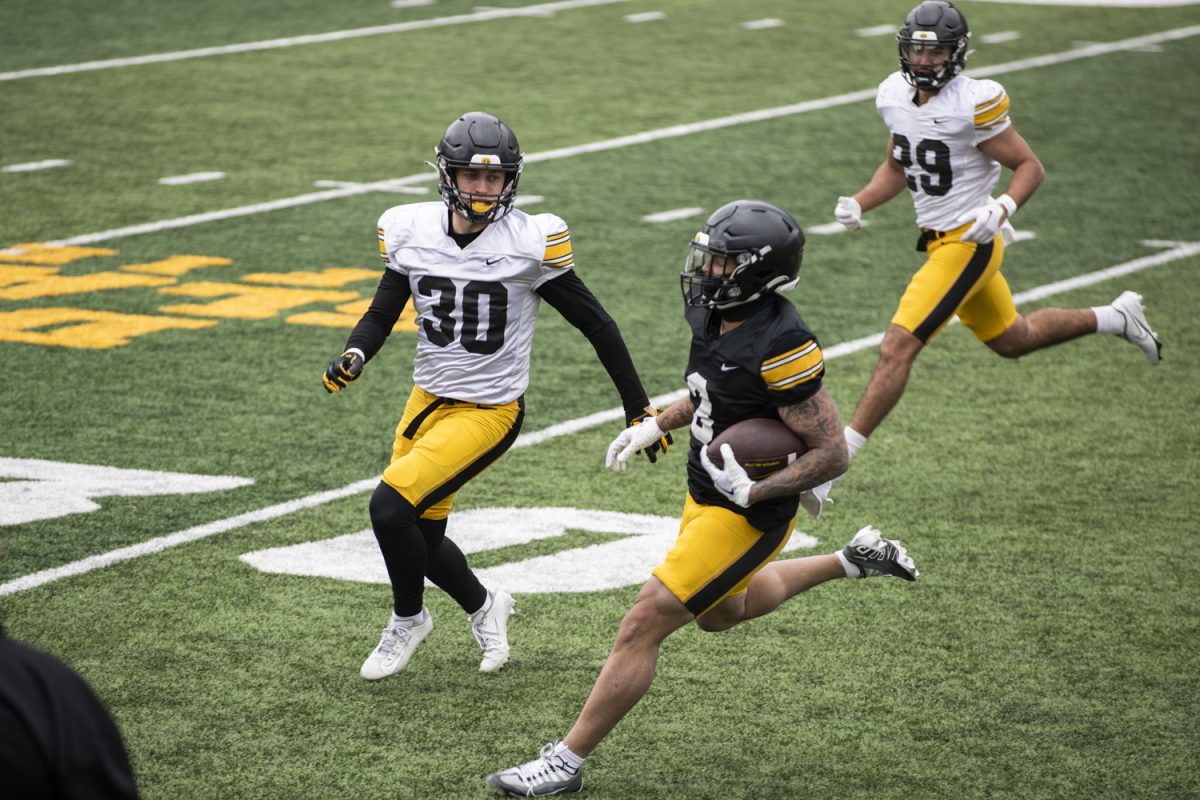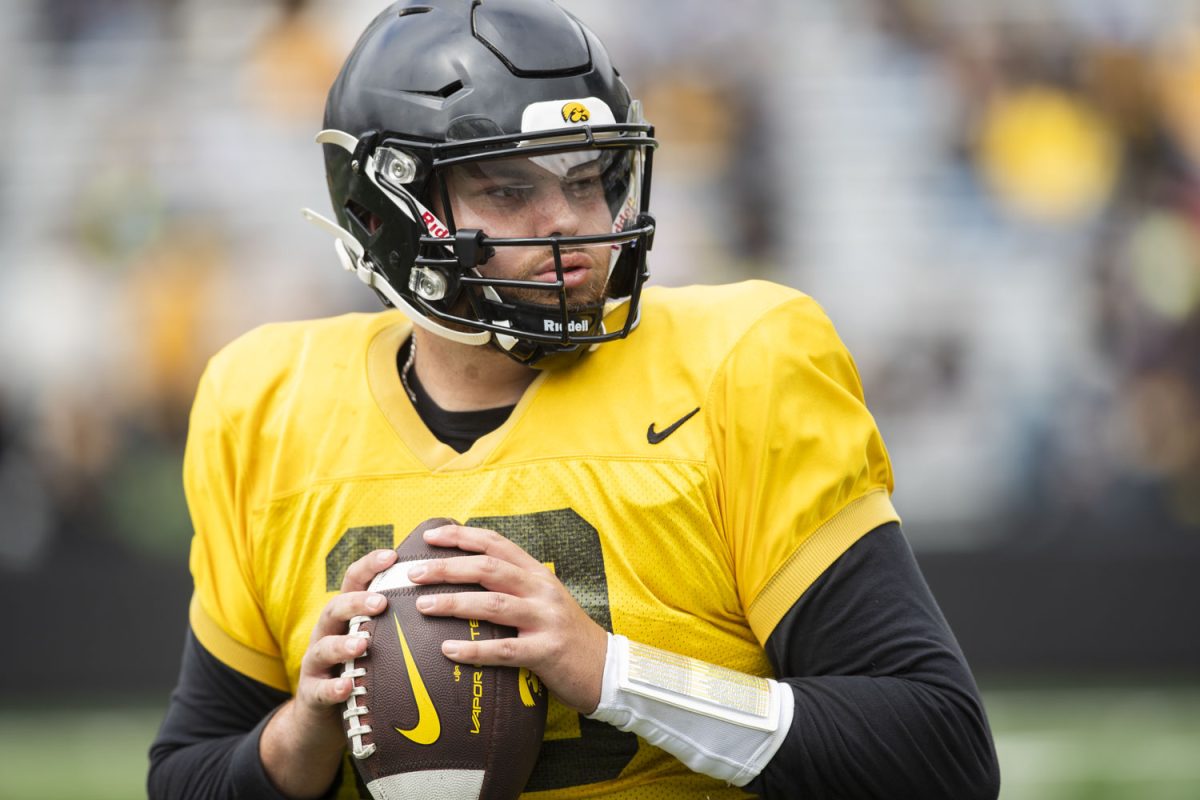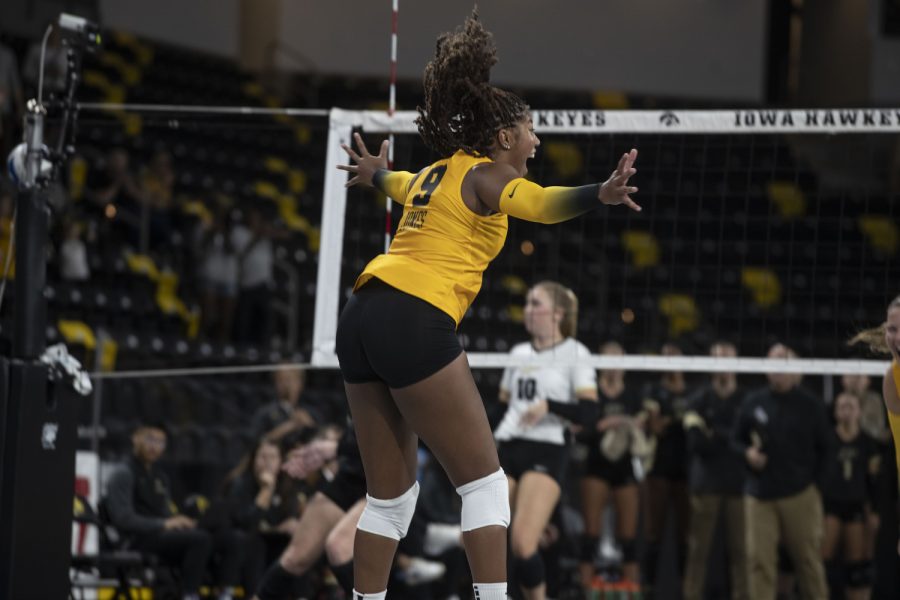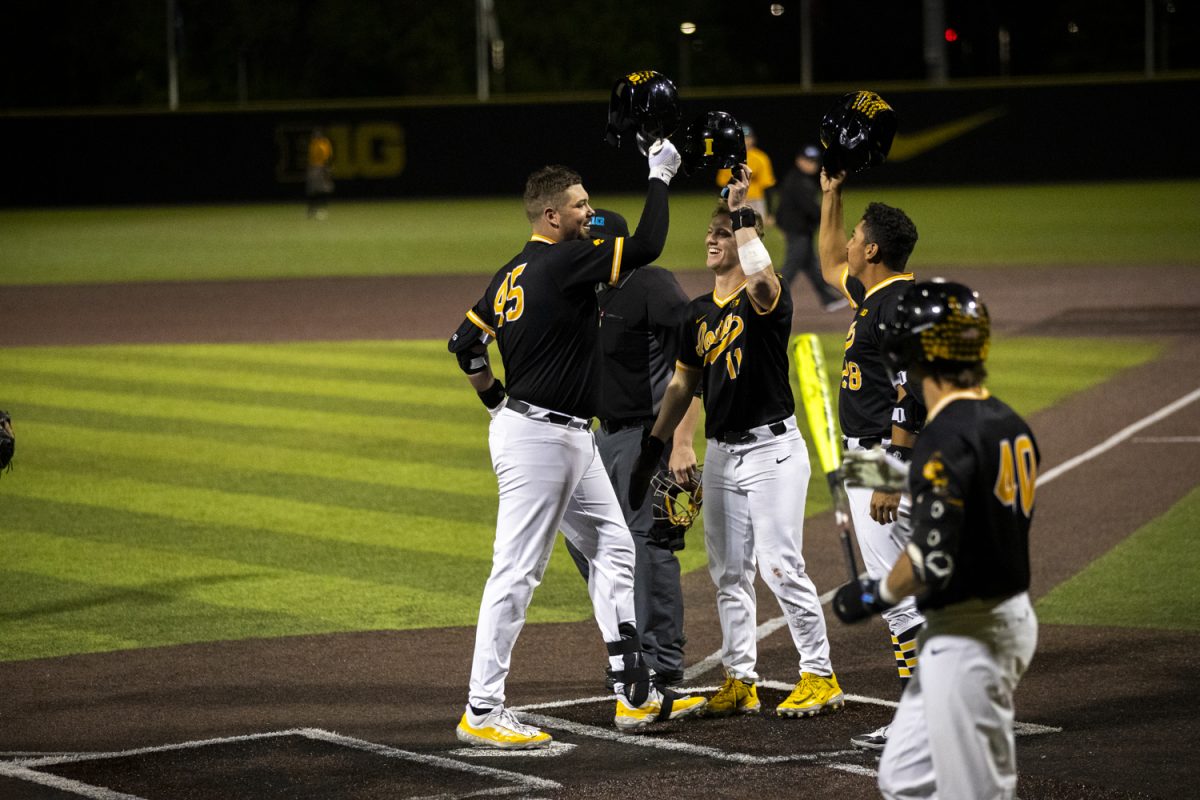Iowa’s relatively quiet tight ends are changing how Iowa creates offense.
By Jordan Hansen
[email protected]
Outside of 3 George Kittle touchdowns, Iowa’s tight ends have been relatively quiet this season.
Nearly halfway through the year, Iowa’s receptions (22) and yardage (238) from tight ends is on pace to be the fewest since 2011. That year, the Hawkeyes only had 37 catches and 394 yards from tight ends.
This season’s tight ends are averaging just fewer than 40 yards per game, which is significantly less than the 51 yards per game Iowa tight ends averaged from 2012-14. Part of this, of course, has to do with Jake Duzey missing a significant chunk of the season.
Duzey has appeared in just two games this season, with no catches. Iowa’s offense — especially in the red zone — has long used tight ends as a major source of yardage and catches.
In 2013, tight end C.J. Fiedorowicz (now with the Houston Texans) finished the season with 299 yards receiving, along with 6 touchdowns. Duzey added another 270 yards and 2 touchdowns in an offense that depended on them to be major contributors.
During that season, tight ends accounted for 29 percent of all receptions and 30 percent of all receiving yardage. As a source of comparison, this year’s crop of tight ends has accounted for just 22 percent of all receptions and 19 percent of the total receiving yardage.
So what does this mean?
For starters, it changes how much the wide receivers and running backs get the ball. Matt VandeBerg has doubled his grabs from last season, and Jacob Hillyer has reached his total yardage from a year ago.
It also has had the running backs more involved in the passing game, something straight out of Greg Davis’ 2005 national champion Texas’ playbook.
That season, Longhorn running backs Jamaal Charles and Ramonce Taylor combined for 41 catches, 422 yards, and 5 touchdowns. That doesn’t match up too poorly with Jordan Canzeri’s 16 catches for 174 yards.
That isn’t to say Davis doesn’t like to use tight ends — far from it, actually. In fact, the leading receiver on the 2005 Texas team was a tight end.
There has been an effort, especially over the last four games, to get the tight ends the ball. Henry Krieger Coble had 5 receptions on eight targets on Oct. 10 against Illinois and is third on the team in receptions with 15 and fourth in receiving yards.
Kittle also leads the team in receiving touchdowns and was fighting off an injury in the early goings of the season. He had a 21-yard touchdown pass against Illinois, and quarter C.J. Beathard has begun to look toward him near the goal line.
Of course, tight ends are also used heavily for blocking in the Iowa offense, and Kittle, Krieger Coble, and Jameer Outsey have all done a fairly good job blocking when called upon.
While Iowa should experience an uptick in receiving stats by tight ends if Duzey returns to form, not having as much production from its tight ends hasn’t hurt the Hawks yet.
Follow @JordyHansen for Iowa football news, updates, and analysis.










